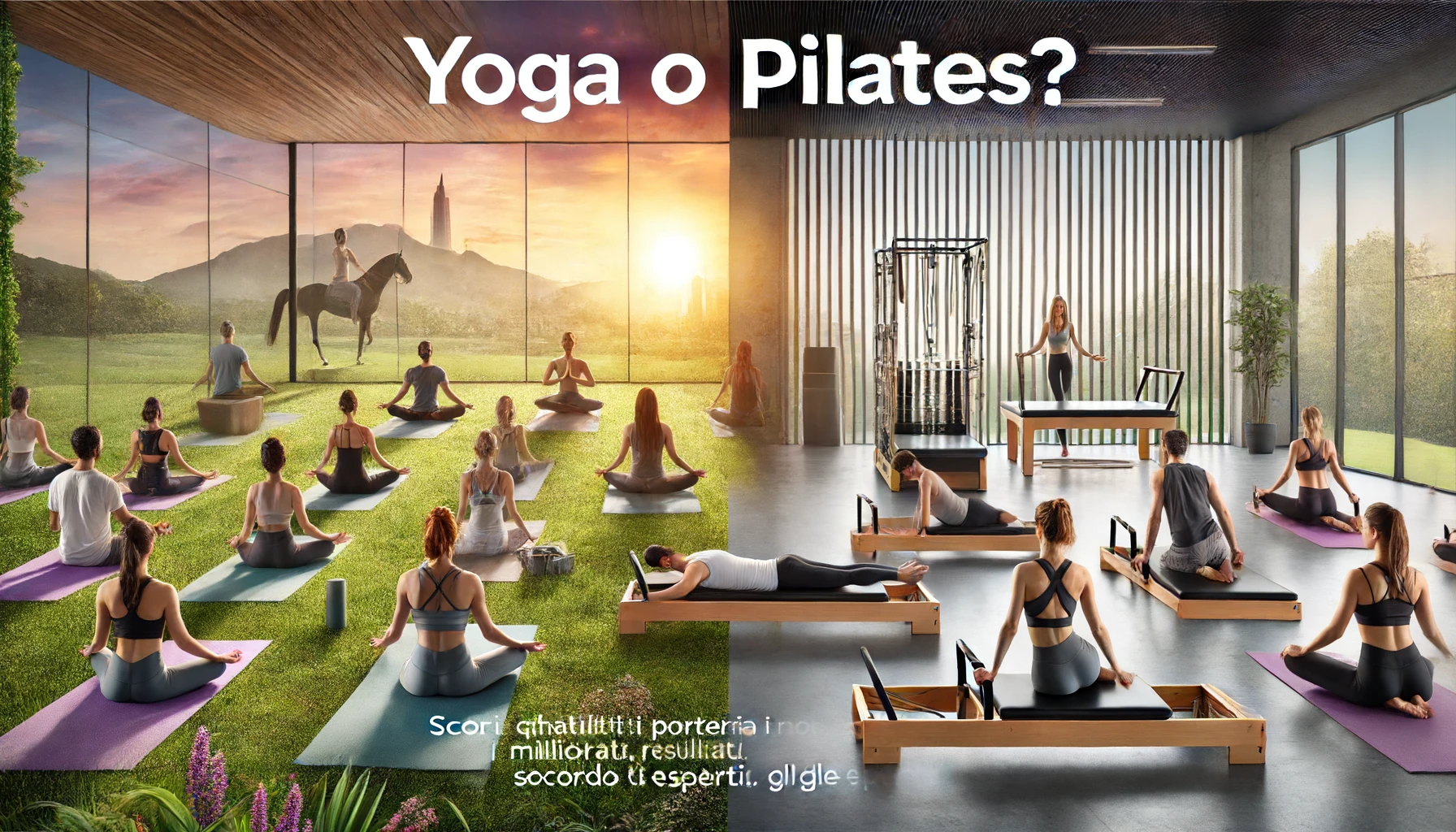Yoga or Pilates? Find out Which Discipline Will Bring You The Best Results, According To Experts

July 5, 2024
In the vast landscape of low-impact workouts favored by fashionistas, two disciplines stand out above the rest: yoga and Pilates. While sharing some benefits such as strengthening the core and improving muscle tone, these two workout methods differ in their often very different approaches and purposes. But which one should you choose? To help you make the right decision based on your needs and goals, we consulted some experts in the field and summarized their valuable advice.
The Key Differences Between Yoga and Pilates
Although both disciplines are challenging in their own way, the main difference between yoga and Pilates lies in the rhythm and type of movements. Yoga tends to have a slower pace, with positions held for longer periods of time, while Pilates is characterized by a sequence of low-impact exercises performed at a more sustained pace, with a particular focus on core strength.
Another relevant distinction concerns the mental approach. While yoga incorporates elements of meditation and spirituality to promote mental and physical well-being, pilates focuses exclusively on the physical aspect, without any spiritual connotations.
The Benefits of Yoga
Yoga, with its ancient Indian roots, aims to unite body, mind and spirit in a path of self-knowledge and liberation. Practiced regularly, it offers numerous benefits, including:
- Increased Flexibility and Muscle Strength: Yoga postures help develop toned and performing muscles, without neglecting the importance of flexibility.
- Improved Mental Health: Through meditation and breathing practices, yoga can help reduce stress and anxiety, promoting better sleep at night.
- Reducing Inflammation and Strengthening the Immune System: Some yoga postures can have beneficial effects on parameters such as blood pressure and the cardiovascular system.
- Self-Awareness: In addition to physical benefits, yoga practice helps develop a greater connection between body, mind and spirit, promoting deep self-reflection.
The Benefits of Pilates.
Conceived by German circus performer and boxer Joseph Pilates, Pilates focuses primarily on strengthening the core, or the area between the chest and pelvis. Here are the main benefits of this discipline:
- Core Strengthening: Pilates exercises aim to tone and strengthen core muscles, which are critical for correct posture and preventing back pain.
- Rehabilitation and Injury Prevention: Due to its low impact on joints, Pilates is an excellent tool for recovery from chronic injuries and to avoid new injuries.
- Rapid Results: Compared to yoga, pilates tends to lead to faster physical changes, especially for beginners.
- Versatility: Pilates movements can be adapted to the needs and abilities of each practitioner, making it suitable for people of all ages and fitness levels.
Yoga or Pilates: How to Choose?
Which discipline to choose between yoga and pilates depends on several factors, including your goals, preferences, and fitness level.
If you are looking for a practice that allows you to devote time to taking care of your mental and spiritual health, as well as your physical health, yoga may be the choice that best meets your needs. Indeed, this discipline combines bodywork with elements of meditation and mindfulness.
On the other hand, if your focus is primarily on core strengthening and a more dynamic workout, Pilates might prove more suited to your expectations. Moreover, this practice is often more accessible for beginners due to its predominantly physical nature.
Regardless of your choice, the key to achieving maximum benefits is consistency. Opt for the discipline you can follow on a regular basis, preferably under the guidance of a qualified instructor, so that you perform the exercises correctly and get the most out of your practice.
Yoga vs Pilates: When to Choose One or the Other
When to Choose Yoga
- If you are a beginner with poor fitness: Yoga may be more accessible than Pilates, which requires more core strength.
- If you want to work on mental health: Yoga, with its spiritual and meditation component, can help reduce stress and anxiety.
- If you prefer a slower, more contemplative practice: Yoga postures are often held for longer periods of time, promoting relaxation.
When to Choose Pilates
- If you want faster results: Because of its faster pace and focused sequence of exercises, Pilates can lead to faster physical changes.
- If you areespecially interested in core strengthening: Pilates exercises are specifically designed to strengthen core muscles.
- If you have joint problems or are undergoing rehabilitation: Pilates, being low-impact, may be a more suitable choice in these cases.
How to Choose the Method Most Suitable for You
Regardless of your choice, it is important to select the discipline that allows you to maintain a consistent and regular practice. Here are some tips for identifying the workout best suited for you:
- Identify your Goals: Think about what you want to achieve from your practice, both physically and mentally.
- Assess Your Level of Preparation: Consider your current fitness and choose a method that fits your level of experience.
- Try Both Disciplines: If possible, attend a few trial yoga and pilates classes to see which one suits you best.
- Choose a Qualified Instructor: Rely on experienced professionals who can guide you in the proper execution of the exercises.
- Be Consistent: Whatever discipline you choose, it is essential to practice it regularly to get tangible results.
Article source here.









